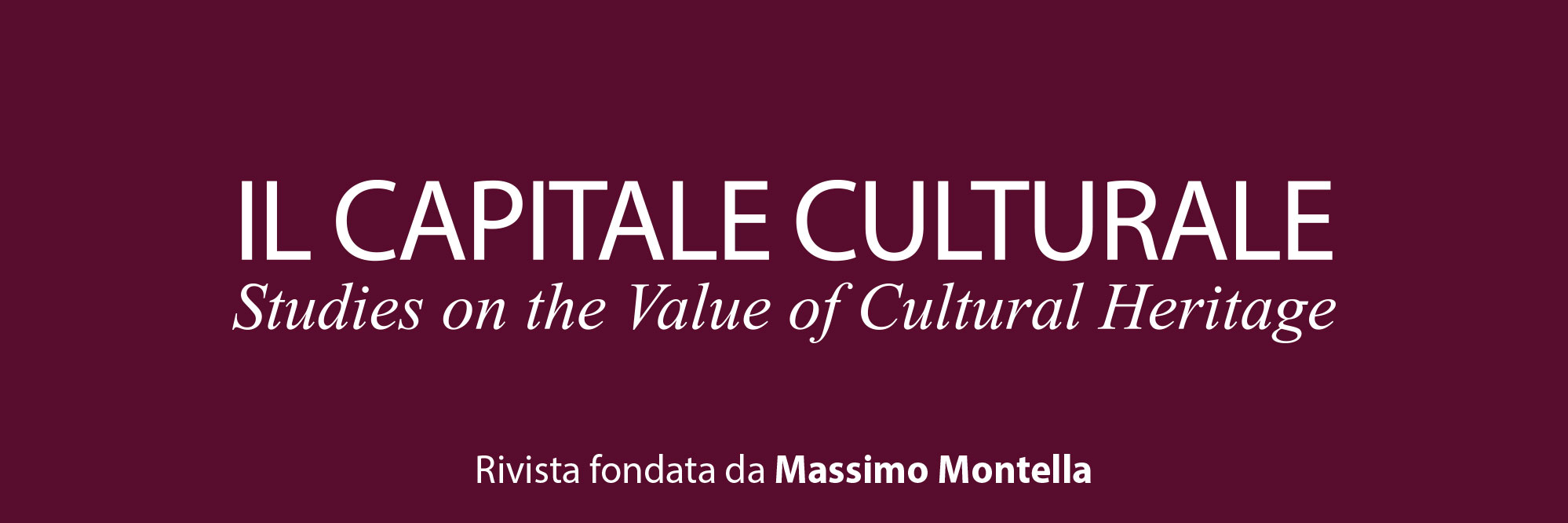Ecological Myth: Ovid and the Anthropocene in three examples of contemporary Danish art
Downloads
Pubblicato
Fascicolo
Sezione
Licenza
Tutti i materiali pubblicati sono coperti da copyright, mantenuto dall'Università di Macerata che ne supporta finanziariamente e tecnicamente la pubblicazione.
La licenza adottata è la Creative Commons - Attribuzione/Condividi allo stesso modo. Ovvero, gli autori che pubblicano su questa rivista accettano le seguenti condizioni:
- Gli autori mantengono i diritti sulla loro opera e cedono alla rivista il diritto di prima pubblicazione dell'opera, contemporaneamente licenziata sotto una Licenza Creative Commons - Attribuzione che permette ad altri di condividere l'opera indicando la paternità intellettuale e la prima pubblicazione su questa rivista.
- Gli autori possono aderire ad altri accordi di licenza non esclusiva per la distribuzione della versione dell'opera pubblicata (es. depositarla in un archivio istituzionale o pubblicarla in una monografia), a patto di indicare che la prima pubblicazione è avvenuta su questa rivista.
- Gli autori possono diffondere la loro opera online (es. in repository istituzionali o nel loro sito web) prima e durante il processo di submission, poiché può portare a scambi produttivi e aumentare le citazioni dell'opera pubblicata.
DOI:
https://doi.org/10.13138/2039-2362/3295Abstract
At a time of increasing ecological anxiety, Ovid’s Metamorphoses gains a new relevance for its distinct portrayal of the relationship between humanity and the environment. While the poem has exerted a significant historic influence in the visual arts, the text’s importance reemerges for artists today as they explore current preoccupations about anthropogenic climate change, environmental degradation and posthumanist futures. The significance of this 21st-century reception of Ovid in the visual arts, however, is yet to be fully examined. In this paper, I consider the work of three contemporary Danish artists,who draw the Metamorphoses into ecological discourse, representing the afterlife of the poem in the Anthropocene.Riferimenti bibliografici
Allen C. (2002), Ovid and Art, in The Cambridge Companion to Ovid, edited by P. Hardie, Cambridge: Cambridge University Press.
ARoS (2021), Sif Itona Westerberg – Immemorial, <https://www.aros.dk/en/about/press-releases/sif-itona-westerberg-immemorial/ >, 19.7. 2023.
Bonneuil C., Fressoz J. (2016), The Shock of the Anthropocene: The Earth, History, and Us, translated by D. Fernbach, New York: Verso.
Braidotti R. (2019), Posthuman Critical Theory, in Posthuman Glossary, edited by R. Braidotti, M. Hlavajova, London: Bloomsbury.
Clark T. (2015), Ecocriticism on the Edge : the Anthropocene as a Threshold Concept, London: Bloomsbury.
Cox F. (2018), Ovid’s Presence in Contemporary Women’s Writing, Oxford: Oxford University Press.
Crutzen P., Stoermer E. (2000), The “Anthropocene”, «IGBP Newsletter» 41, 12.
Dancer T. (2021), Critical modesty in contemporary fiction, Oxford: Oxford University Press.
Danish Arts Foundation (2022), Danish Pavilion at the 59th International Art Exhibition – La Biennale di Venezia, 23 April – 27 November 2022, <https://www.kunst.dk/english/art-forms/visual-arts/danish-pavilion >, 19.7.2023.
DeBrohun J.B. (2004), Centaurs in Love and War: Cyllarus and Hylonome in Ovid “Metamorphoses” 12.393-428, «The American Journal of Philology», 125(3), pp. 417-452.
Den Frie (2023), We Walked the Earth: Harnessing, <https://denfrie.dk/en/exhibition/we-walked-the-earth-harnessing/ >, 19.7.2023.
Ellis E.C. (2018), Anthropocene: A Very Short Introduction, Oxford: Oxford University Press.
Guattari F. (2014), The Three Ecologies, London: Bloomsbury.
Katsikopoulou M. (2022), Danish pavilion unveils transhuman installation ‘We Walked the Earth’ at Venice Art Biennale, < https://www.designboom.com/art/danish-pavilionwe-walked-the-earth-uffe-isolotto-venice-art-biennale-04-21-2022/ >, 19.7.2023.
Martelli F. (2020), Ovid, Boston: Brill.
McKibben B. (1990), The End of Nature, London: Viking.
Lawrence E. (1994), The Centaur: Its History and Meaning in Human Culture, «Journal of popular culture», 27(4), pp. 57-68.
Ovid (2004), Metamorphoses, translated by D. Raeburn, London: Penguin.
Postclassicisms Collective (2020), Postclassicisms, Chicago and London: University of Chicago Press.
Soper K. (1995), What is Nature? Culture, Politics and the Non-human, Oxford: Blackwell.
Tsing A.L. (2015), The Mushroom at the End of the World: On the Possibility of Life in Capitalist Ruins, Princeton: Princeton University Press.




